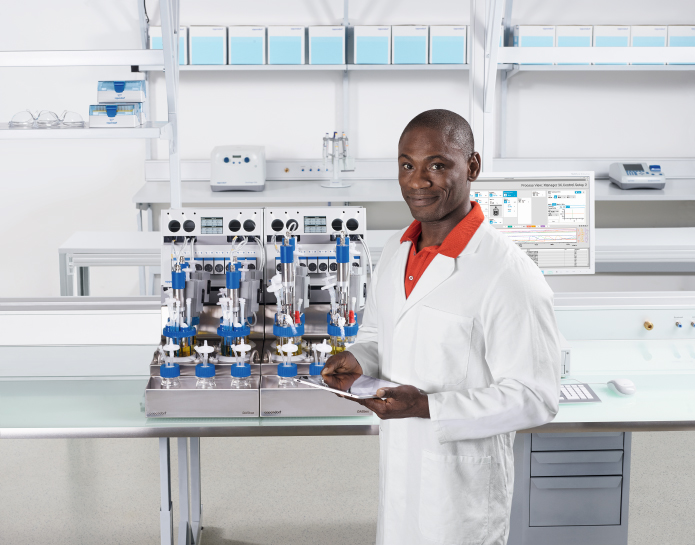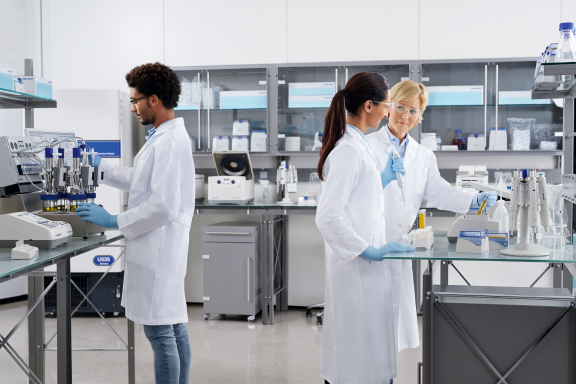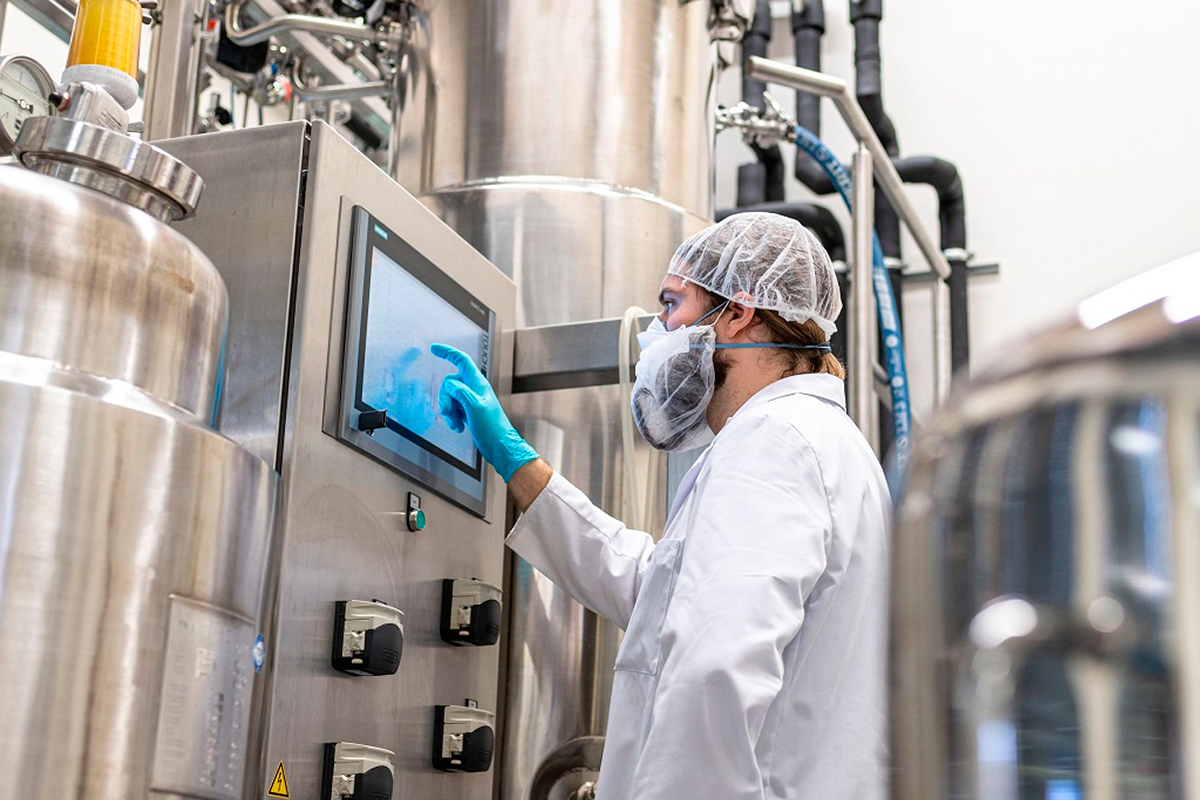Setting up your first bioprocessing space can be an intimidating task, especially if you have historically relied on traditional techniques for cell culture reactions, such as shake flasks.
By William Dow, Bioprocess Sales Engineer and Ma Sha, Ph.D., Head of Bioprocess Application Labs, Eppendorf
Setting up your first bioprocessing space can be an intimidating task, especially if you have historically relied on traditional techniques for cell culture reactions, such as shake flasks. While easier to use and not reliant on other advanced equipment or technical knowledge, these methods do not provide the added benefits of a bioreactor, increased yield and detailed process characterization. The data derived from a bioreactor provides the upfront knowledge needed to design the most efficient workflow possible and, in some cases, allows up to a tenfold increase in cell density over traditional techniques based on the organism.
However, upgrading your space for bioprocessing requires answers to two critical questions:
- What factors do you need to think about before making an investment?
- How can the equipment provider you choose ease the burden of selecting the right equipment?
Key Factors Of A Successful Bioprocess Lab
Bioreactors offer a controlled environment during process development with the ability to monitor and control a range of parameters during cell growth and metabolism, such as temperature, agitation, dissolved oxygen, pH, and biomass. Understanding how the cells are growing and what their nutritional needs are helps when determining and adjusting for optimal growth conditions within the bioreactor, leading to the highest possible titer, cell density, and overall cell health.
Information about cell growth is vital for successful scale-up, as you can use it to identify the most efficient methods for achieving the volumes you need for a clinical trial or production batch. It also provides the added benefit of batch-to-batch consistency by using data from the bioreactor to help improve productivity and product quality. Determining critical process parameters without these tools often requires trial-and-error methods that can lead to wasted batches and lost time and resources. However, when purchasing your first bioreactor, you must also consider any additional equipment you need as well as the operating costs for the system.

Bioreactors offer several benefits over traditional methods, yet there are components in the bioprocess workflow that you must acquire that are used in conjunction with the system for it to be successful. For instance, analytical equipment, such as a bioanalyzer or a spectrophotometer, are necessary to measure metabolites and cell density and provide the data that helps drive smart process design. Another example are incubators required to prepare initial inoculum, as it is not always possible to add cells directly to the bioreactor after they are thawed. Instead, you may need to increase cell density using an incubator first and then transfer them to the benchtop bioreactor. While these tools do not need to fit in the same space as the bioreactor, you must have access to them to optimize the workflow in your lab.
Operating Costs
Ongoing operating costs associated with maintaining and running the equipment should also be included in your budget. For example, unlike most equipment in a laboratory that requires only an electrical connection, bioreactors rely on a source for air, oxygen, carbon dioxide, and/or nitrogen as well. Therefore, before scheduling an equipment installation, it is important for your facility manager to speak with a gas supplier. In addition, cooling water may be necessary for certain processes, such as high-density microbial processes, so it is important to identify whether the unit will be placed next to a water supply and drain or if you plan to employ a recirculating chiller. You should also consider autoclave capacity and, for certain pilot/production scale systems, a steam generator. In many cases, a bioreactor takes up more space than a typical mini centrifuge, so lab size is a key factor when making decisions about the setup of your system. Modular systems are often a good solution when space is limited, such as in laboratories.
The equipment provider you select should guide you on how to optimize the space you have available to ensure your setup allows for the highest output possible per square foot.

Effective communication about your technical needs helps define the success of not only your bioreactor control system but also the relationship between you and your supplier. With so many factors to consider in the early phases of equipment selection, it is important to select a supplier with the resources available to understand your long-term goals and design a system with the specifications in place to achieve them. Eppendorf initiates conversations around these topics early. Eppendorf bioprocess engineers participate in early consultations to help you determine the options available and evaluate for the best plan as soon as possible. They apply a wide range of expertise and solutions to help you meet your goals:
- Software solutions. Having bioreactors equipped with software solutions that allow the execution and analysis of multiple experiments during process development provides you with opportunities for data analysis to better understand how to improve your process and final yield. Eppendorf’s intuitive software solutions does this by allowing remote monitoring and process control to reduce time and human error.
- Selection of application types and working volumes. Working with traditional mammalian processes, stem cells, or yeast requires different bioreactor features and vessel sizes for culturing. Eppendorf offers bioreactor control systems for volumes from 50 milliliters to 2,400 liters. This includes single-use bioreactors, which offer several benefits, such as reduced cleaning requirements and contamination, smaller overall footprint, and a lower capital investment. As your needs evolve, single-use technology and a supplier that understands it gives you the flexibility to quickly respond to those changes without costly interruptions.
- Industry expertise. Eppendorf’s team includes a comprehensive portfolio of services backed by industry and academic expertise to help navigate the decision-making and design process. Service engineers are available worldwide to manage the installation of your system, and application scientists are ready to perform onsite training based on your existing level of knowledge, the equipment you select, and the end goal for your process. They will walk you through the process from bioreactor setup to first run through harvesting and data analysis, offering the guidance you need to confidently use your bioreactor system in your day-to-day operations. For the security of your investment, Eppendorf provides ongoing maintenance to ensure you have the support you need throughout the lifecycle of your product.
Overall, bioreactors provide several benefits that can offer crucial advantages in drug development and manufacturing. Selecting the one that is best for your process and the dedicated space you have available requires consideration of many important factors, necessitating guidance from a team of experts equipped with vast knowledge and experience in bioprocessing. If you do not have this in-house, select an equipment provider that has not only the resources necessary to make the best decisions for your process but also the flexibility to adapt as your needs grow and change in an increasingly competitive market.
Fuente: https://www.bioprocessonline.com/doc/what-you-need-to-know-before-investing-in-a-bioprocessing-space-in-your-lab-0001

